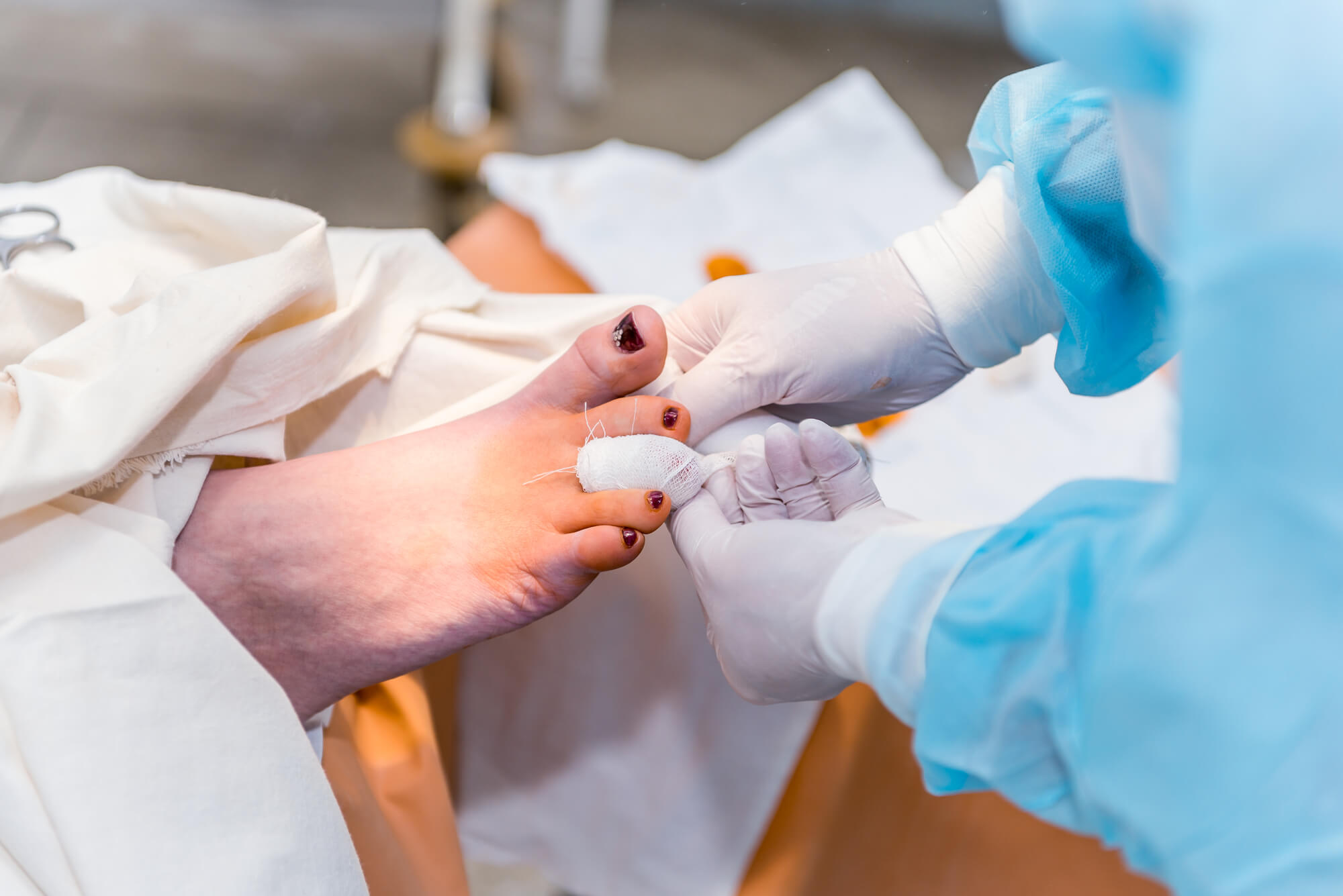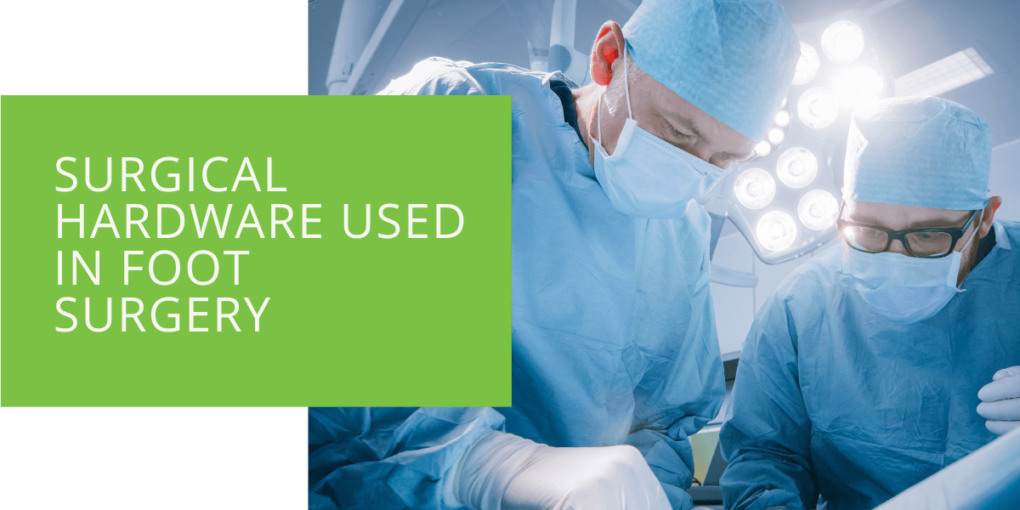Exploring the Types of Surgical Hardware Used in Foot Surgery
As a podiatrist, your feet and ankles are your most important assets. They allow you to move, walk and participate in activities you enjoy. However, when injuries or conditions such as arthritis affect your feet, surgery may be necessary to restore function and reduce pain. One of the key components of foot surgery is surgical hardware, such as screws, plates, wires, pins, and external fixators. In this article, we'll explore the different types of surgical hardware used in foot surgery, their benefits and risks, and the factors that influence their use.
Common Types of Surgical Hardware Used in Foot Surgery
Screws
Screws are cylindrical or conical metal objects that are used to fixate bones in the foot and ankle. They are made of titanium, stainless steel, or a combination. There are different types of screws used in foot surgery, including cancellous screws, cortical screws, and lag screws.
Cancellous screws are designed for use in the foot's soft tissue and spongy bone. They have a coarse thread that provides greater holding power in softer bones. Cortical screws, on the other hand, are used in the hard outer layer of bone. They have a finer thread that provides less holding power but is less likely to strip the bone. Lag screws compress two bones together in a fracture or osteotomy.
Screws are commonly used in foot surgery for internal fixation of fractures, fixation of osteotomies, and arthrodesis. The benefits of screws include their versatility, reliability, and ease of use. However, the risks include the possibility of breakage, loosening, and migration.

Plates
Plates are flat metal objects contoured to fit the shape of the bone. They are made of titanium or stainless steel and are designed to hold the bone in place while it heals. Different types of plates are used in foot surgery, including compression plates, reconstruction plates, and locking plates.
Compression plates are designed to apply pressure to the bone to promote healing. Reconstruction plates are used to bridge a defect in the bone while locking plates are designed to achieve stability by screwing into the bone in a predetermined position.
Plates are commonly used in foot surgery for internal fixation of fractures, osteotomies, and arthrodesis. The benefits of plates include their ability to achieve stable fixation and low profile. However, the risks include the possibility of plate breakage, loosening, and irritation of the soft tissue.
Wires
Wires are thin, metal objects that hold bone fragments together in fractures, osteotomies, and arthrodesis. They are made of stainless steel or titanium and are commonly used with other surgical hardware.
Different types of wires are used in foot surgery, including Kirschner wires, Steinmann pins, and tension bands. Kirschner wires are used to hold bone fragments together, while Steinmann pins are used to provide stability in fractures and osteotomies. Tension bands convert a non-compressive force into a compressive force, which can be used to treat certain types of fractures.
The benefits of wires include their ability to provide temporary or supplementary fixation and their ease of use. However, the risks include the possibility of wire breakage, loosening, and infection.

Pins
Pins are thin, metal objects that stabilize bones in the foot and ankle. They are made of stainless steel or titanium and come in different lengths and thicknesses.
Different types of pins are used in foot surgery, including Steinmann pins, Kirchner wires, smooth pins, and cannulated pins. Steinmann pins stabilize fractures and osteotomies, while Kirchner wires are used for temporary fixation or reduction. Smooth pins hold small fragments together or anchor tendons or ligaments, while cannulated pins are hollow and are used to place screws through them.
The benefits of pins include their versatility and ease of use. They are often used in minimally invasive surgeries or with other surgical hardware. The risks include the possibility of pin migration, breakage, or infection.
External Fixators
External fixators stabilize fractures or bone segments by connecting pins or screws to a rigid external frame. They are typically used in complex fractures, osteotomies, and arthrodesis. External fixators are often used in cases where internal fixation is not possible or to supplement internal fixation.
The benefits of external fixators include their versatility, stability, and ability to accommodate complex fractures or deformities. The risks include pin site infections, skin irritation, and discomfort.

Factors That Influence the Choice of Surgical Hardware
The choice of surgical hardware depends on several factors, including the patient's age, activity level, and overall health. The type and severity of the condition, the location of the injury or deformity, and the surgeon's preference and experience also play a role in the choice of surgical hardware.
For example, internal fixation is often preferred for younger patients with higher activity levels, allowing quicker recovery and a return to normal activity. External fixation may be preferred for patients with significant soft tissue damage or in cases where internal fixation is impossible.
The type of surgical procedure also influences the choice of surgical hardware. For example, in an open reduction and internal fixation procedure for a metatarsal fracture, screws and plates may stabilize the bone. In an osteotomy, plates, and screws may hold the bone in place while it heals.
Conclusion
Surgical hardware plays an important role in foot and ankle surgery. The choice of surgical hardware depends on several factors, including the type and severity of the condition, the location of the injury or deformity, and the surgeon's preference and experience. Understanding the different types of surgical hardware, their benefits and risks, and the factors influencing their use can help patients make informed decisions about their treatment options.
If you have a foot or ankle condition requiring surgery, consult a podiatrist who can help you understand your options and provide the care you need to get back on your feet.

